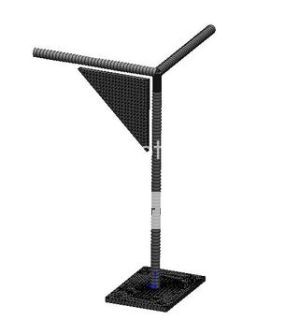Wow. That's a huge project to dive into X's 2. Depending on your access to machining tools, or better, access to a machine shop, it is really going to be a challenge, especially on the aluminum 80% lower. I have a friend who is a fairly large manufacturer of aluminum lowers (
tacticalmachining.com in FL) and I've been considering starting with one of his 80%'ers for a bottom-up build like that for several years. I've got 20 years in the steel industry (not aluminum, but similar disciplines), and I haven't taken on that kind of challenge because I don't have the right tools, or local friends who do, or access to a machine shop etc. If you have that kind of help, more power to ya, it's still a daunting task for a beginner. If not though, you may well have bitten off more than you can chew. I wish you luck either way, and admire your ambition too. Seriously, good luck.
On the number designations, they derive from the
American National Standards Institute (ANSI) in conjunction with
The Aluminum Association. ANSI covers national standards for thousands of different materials, so to get the kind of detailed info you're looking for, you'll probably have an easier time of it going to TAA website, since they deal only with aluminum.
Basically though, to start,
all aluminum is "alloy" regardless of the numbers that further detail its different compositions, tempering and tensile and shear strengths. I can't tell you exactly what each column of numbers refers to, but I can tell you that those are the kinds of things they designate. All aluminum alloys have four-number designations, and the first number tells you what the main mixture of different metals and elements is. Here's a chart showing those basic main components, but as you can see, the first number doesn't tell you how much of any one metal or element is present (except for 1000 series, but I've never seen that used for anything other than ordering raw material to cast or roll into an alloyed composition). That is detailed by the other three numbers.
| Series | Main Alloying Elements |
| 1000 | Pure Aluminum (99% min.) |
| 2000 | Copper |
| 3000 | Manganese |
| 4000 | Silicon |
| 5000 | Magnesium |
| 6000 | Magnesium & Silicon |
| 7000 | Zinc |
| 8000 | Lithium & Other Additive Elements |
If you go to TAA website and search on the specific number designations you mentioned, you can probably find the meanings of the remaining three columns of numbers pretty easily. If the specific numbers don't get you adequate results, try "properties" or "composition."
I'm guessing the "T" designation refers to temper or hardness. I can tell you how that measurement relates to why you might choose one hardness rating over another. Let's say (hypothetically) that a specification calls for an aluminum column within a building of T3 tempering, while calling for an aluminum gusset of T6 tempering. First of all, understand that I could be mistaken that that's what the "T" refers to to begin with, but I'm just trying to tell you what purpose is served by making any kind of structural component harder or softer. So in this hypothetical, the column is softer (T3) and the gusset is harder (T6). Look at this elementary illustration of the two structural members I'm referencing:

The column is the vertical piece, and the gusset is the triangular piece tying in the vertical column with the horizontal beam as a reinforcement of the joint. When a piece of metal is "soft," it will bend more without losing its structural properties than a piece that is "hard." So the column in our hypotheitcal building is softer so that it can bend a little in the wind. When the wind dies down, the column will return to its original position with no cracks, tears or shearing from the stresses imposed by bending it. The gusset on the other hand, doesn't have to bend. It is there to make the most secure joint possible. The stresses imposed on it are compression and/or stretching as the other members do the bending, so giving it a high temper increases its resistance to the kinds of stresses it will encounter within the assembly. If the column or beam were tempered as hard, they would be brittle and susceptible to failure under bending stresses.
So now let's relate those kinds of properties to building a firearm. Your alloy lower will have almost no bending stresses put on it, and if I'm right that "T" stands for temper, a T5 or T6 rating is a pretty high (hard) rating. Makes sense. Too soft and it could become easily deformed when dropped on a rock in the field for example. Too hard, and it could crack from being brittle when dropped on the same rock. Firearms, especially semi-autos that fire rifle rounds, take a constant beating under use. In short, the alloy designations are selected for a rifle according to the kinds of stresses they will most likely be exposed to under normal use.
Hope that helps. I taught welding and was a construction estimator for a combined 10 of my 20 years in the industry. I had to teach guys (and a few gals) how to weld on aluminum and other alloys, but my seven years as an estimator dealt almost exclusively with steel structures, thus my going straight to a column and beam structure for an example. If you have any trouble finding the rest of the numbers' meanings within the designations, let me know and I'll see if I can track 'em down for you. You don't really need them, but I understand the "I just want to know" meme. I suffer greatly from that affliction myself. ;-)~
Blues


